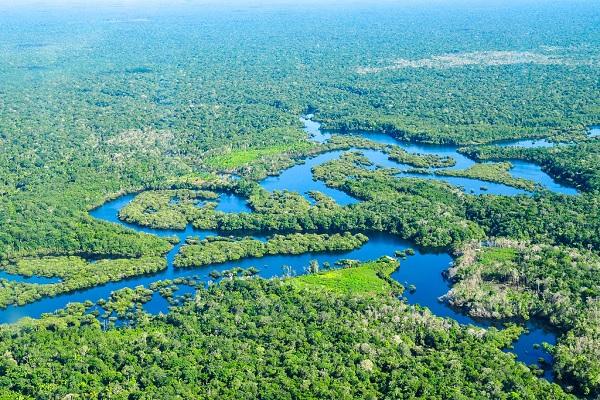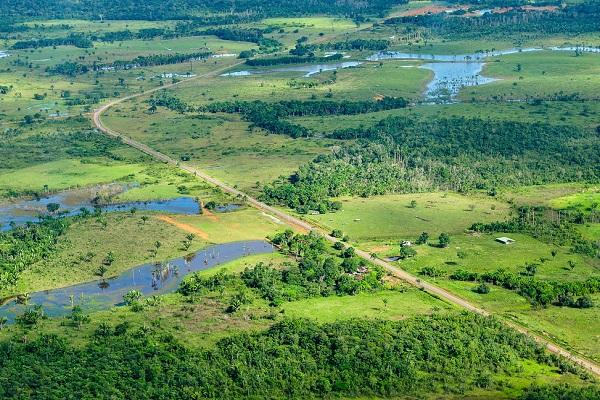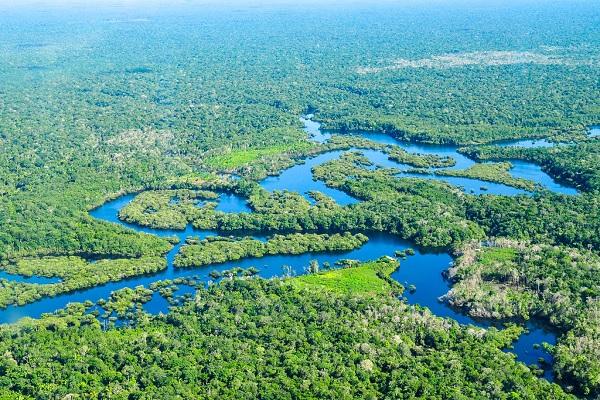
The Amazon was named after the legendary warrior women of Greek mythology. It is the world's largest rainforest, covering over 5.5 million square kilometers. The Amazon is so large that the United Kingdom and Ireland would fit in it 17 times. And if it were a country, it would be the ninth largest in the world. It is found in South America, spanning nine countries, including Brazil, Bolivia, Peru, Ecuador, Colombia, Venezuela, Guyana, Suriname, and French Guiana. Here are some more interesting and little-known facts about the famous Amazon.
1. Diversity
The Amazon is known for its incredibly rich ecosystem. It is home to about 40,000 species of plants, 1,300 species of birds, 3,000 species of fish, 430 mammals and 2.5 million different insects. It is home to many dangerous species such as electric eels, carnivorous piranhas, poison dart frogs, jaguars and anacondas. It is also home to a fish called Pirarucu, a meat-eater that can grow up to 3 m long. This dangerous fish has teeth on the roof of its mouth and on its tongue. The Amazon is also home to about 21 million people. Including an estimated 50 remote tribes that have not yet come into contact with modern civilization.
2. Amazon River
There is a small debate about whether the Amazon River is the longest river in the world. According to some researchers, the total length of the Amazon River is 4,000 miles, making it the second longest river after the Nile River in Egypt, which is 4,132 miles long. But according to a group of scientists, the Amazon River actually originates in the Peruvian Andes and stretches for 4,225 miles, which is longer than the Nile River. Either way, the Amazon River is the largest river by volume. It discharges a whopping 55 million gallons of water per second into the Atlantic.
3. Secret Rivers
A 2006 geological study showed that the Amazon used to flow from east to west, but changed direction when the Andes rose across the continent due to continental drift about 100 million years ago. The Amazon rainforest holds many secrets. One of them is its little-known rivers. The Hamza River in the Amazon rainforest, which is about the same length and even wider than the Amazon River, is an underground river located 4 kilometers below the Amazon. Another fascinating river in the rainforest is the “Boiling River.” The river literally boils, and at times its temperature can reach 93 degrees Celsius.

4. The Sahara Desert Helps the Amazon Survive
Incredibly, the world’s largest desert supports the world’s largest and most biodiverse rainforest. Recent research using satellite images and advanced dust cloud modeling shows that particles collect in the Sahara Desert and are carried by wind over the Atlantic before settling in the Amazon. Since the Amazon requires a constant supply of fresh dust and phosphorus to the topmost soil to continue to thrive, the Sahara Desert provides much of its needs.
5. The problem of deforestation
The Amazon rainforest is dying at an alarming rate. 1.5 acres of the Amazon disappear every second, and an average of 137 species go extinct every day. The Amazon rainforest accounts for 30% of global carbon emissions, and if it continues to disappear at this rate, there will be nothing left in 40 years. Unfortunately, much of the deforestation is being done to make room for cattle ranching.
6. "Lungs of the Earth"
At least, that’s what we used to believe. Because the rainforest pumps out a whopping 20% of the world’s oxygen every day, far more than any other ecosystem, we call it “the lungs of the earth.” But its decaying plant matter also releases roughly the same amount of CO2, about 30%. That means the rainforest is more or less in balance. And the vast majority of the oxygen we breathe actually comes from microorganisms throughout the world’s oceans. In fact, the Amazon has a cooling effect on the global climate by absorbing vast amounts of the sun’s heat.
7. It is quite dark in the lower part of the forest.
One hectare of tropical forest can contain more than 750 species of trees and 1,500 species of plants. The forest is so dense that the forest floor receives only 1% of sunlight through the thick canopy, making it almost completely black. In fact, when it rains, the water runs down to the bushes below in 10 minutes.
8. The man swam across the entire river
In 2007, a man named Martin Strel swam the entire length of the Amazon River. He swam up to ten hours a day for 66 days to complete his journey. He is the first person to do so, and holds a Guinness World Record for it.

9. Most of our food and medicine comes from there.
More than 80% of the world's food products come from the Amazon rainforest. 70% of plants with anti-cancer properties grow in the rainforest. Although only 1% of Amazonian plant species have been tested for medicinal properties, more than 25% of modern pharmaceuticals contain Amazonian ingredients.
10. Climate change could destroy the Amazon
Besides deforestation, another thing that is damaging and could even destroy the great Amazon rainforest is climate change. It is estimated that if climate change increases global temperatures by just 3 degrees Celsius, 75% of the Amazon will be destroyed.
Do you know any other interesting or lesser-known facts about the Amazon? Let us know your thoughts in the comments below.














Оставить Комментарий